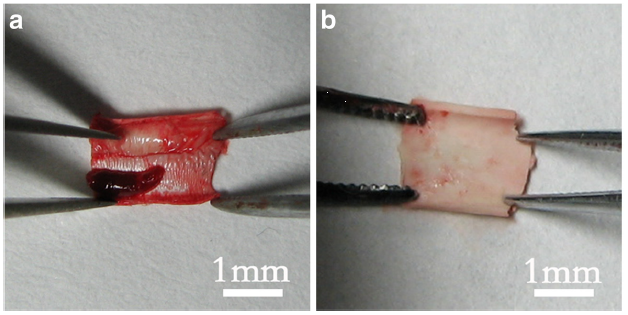▼ Reference
- Ahmed F, Choudhury N R, Dutta N K, Brito A S, Zannettino A, Duncan E. Interaction of platelets with poly(vinylidene fluoride-co-hexafluoropropylene) electrospun surfaces. Biomacromolecules 2014; 15: 744.
- Del Gaudio C, Ercolani E, Galloni P, Santilli F, Baiguera S, Polizzi L, Bianco A. Aspirin-loaded electrospun poly(e-caprolactone) tubular scaffolds: potential small-diameter vascular grafts for thrombosis prevention. J Mater Sci: Mater Med 2013; 24: 523.
- Dhandayuthapani B, Varghese S H, Aswathy R G, Yoshida Y, Maekawa T, Sakthikumar D. Evaluation of Antithrombogenicity and Hydrophilicity on Zein-SWCNT Electrospun Fibrous Nanocomposite Scaffolds. International Journal of Biomaterials 2012; 2012: 345029. Open Access
- Hashi C K, Zhu Y, Yang G Y, Young W L, Hsiao B S, Wang K, Chu B, Li S. Antithrombogenic property of bone marrow mesenchymal stem cells in nanofibrous vascular grafts. PNAS 2007; 104: 11915. Open Access
- Hashi C K, Derugin N, Janairo R R R, Lee R, Schultz D, Lotz J, Li S. Antithrombogenic Modification of Small-Diameter Microfibrous Vascular Grafts. Arterioscler Thromb Vac Biol 2010; 30: 1621. Open Access
- He W, Ma Z, Teo W E, Dong Y X, Robless P A, Lim T C, Ramakrishna S. Tubular nanofiber scaffolds for tissue engineered small-diameter vascular grafts. J Biomed Mater Res A 2009; 90: 205.
- Hong Y, Ye S H, Nieponice A, Soletti L, Vorp D A, Wagner W R. A small diameter, fibrous vascular conduit generated from a poly(ester urethane)urea and phospholipid polymer blend. Biomaterials 2009; 30: 2457.
- Liu R, Qin Y, Wang H, Zhao Y, Hu Z, Wang S. The in vivo blood compatibility of bio-inspired small diameter vascular graft: effect of submicron longitudinally aligned topography. BMC Cardiovascular Disorders 2013; 13: 79. Open Access
- Milleret V, Hefti T, Hall H, Vogel V, Eberli D. Influence of fiber diameter and surface roughness of electrospun vascular grafts on blood activation. Acta Biomater. 2012; 12: 4349.
- Niu Y, Galluzzi M, Fu M, Hu J, Xia H. In vivo performance of electrospun tubular hyaluronic acid/collagen nanofibrous scaffolds for vascular reconstruction in the rabbit model. J Nanobiotechnol 2021; 19: 349. Open Access
- Seib F P, Herklotz M, Burke K A, Maitz M F, Wener C, Kaplan D L. Multifunctional silk-heparin biomaterials for vascular tissue engineering applications. Biomaterials 2014; 35: 83.
- Wang C, Wang S, Pan H, Min L, Zheng H, Zhu H, Liu G, Yang W, Chen X, Hou X. Bioinspired liquid gating membrane-based catheter with anticoagulation and positionally drug release properties. Science Advances 2020; 6: eabb4700. Open Access
▼ Credit and Acknowledgement
Author
Wee-Eong TEO View profile
Email: weeeong@yahoo.com
 ElectrospinTech
ElectrospinTech
